Sourcing for sunglasses wholesale supplies? In this article, Eugenia eyewear factory will walk you through full introduction to sunglasses. Follow Eugenia factory and bring yourself up to speed.
Sunglasses working principle:
Sunglasses can block out the uncomfortable glare and also protect eyes from uv damage.
All thanks to metal powder filters, which can "select" light as it enters.
Colored glasses selectively absorb parts of the sun's light because they use very fine metal powders (iron, copper, nickel, etc.). In fact, when light hits the lens of sunglasses, it is reduced by a process called "destructive interference". That is, when certain wavelengths of light (in this case, ULTRAVIOLET A, ULTRAVIOLET B, and sometimes infrared) pass through the lens of sunglasses, they cancel each other out on the inside, in the direction facing eye.
The overlapping of light waves is no accident: the crests of one wave and the troughs of its nearest neighbor cancel each other out.
Destructive interference depends on the refractive index of the sunglasses lens (that is, the degree to which light deviates as it passes through different substances through the air), and also on the thickness of the sunglasses lens.
In general, the thickness of the lens does not vary much, while the refractive index of the lens varies according to the chemical composition.
And sunglasses should not be in direct contact with the sun.
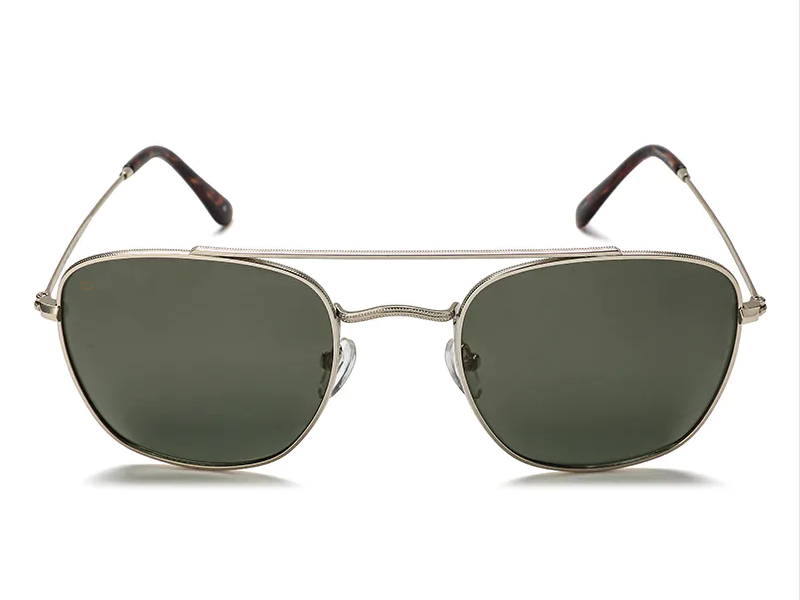
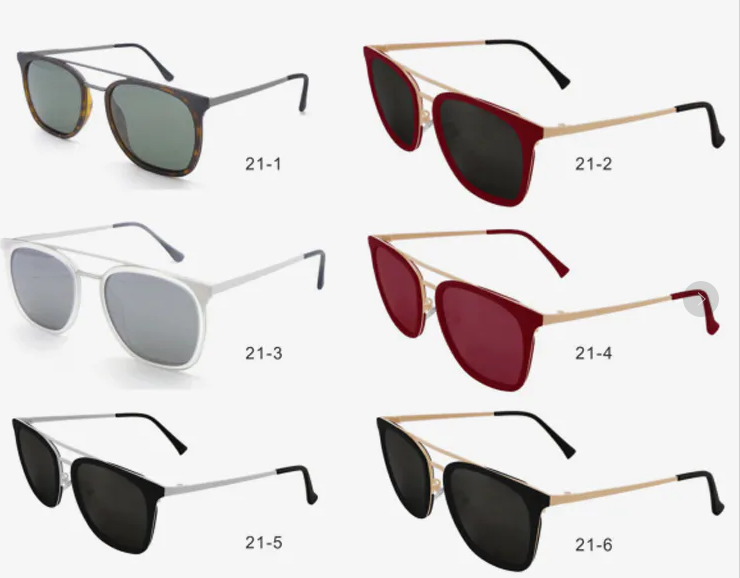
Polarised sunglasses effect:
Polarized sunglasses provide another mechanism for eye protection.
The reflected light of asphalt road is a special kind of polarized light.
The difference between this reflected light and light coming directly from the sun or from any artificial source is the problem of order.
Polarized light is made up of waves that vibrate all in one direction, while ordinary light is made up of waves that vibrate undirected, in sharp contrast to a group of men who move about in disorder and a group of soldiers who march at a measured pace.
Generally speaking, reflected light is a kind of orderly light.
Polarizing lenses of polarized sunglasses are particularly effective at blocking this light because of their filtering properties.
The lenses of sunglasses allow only polarized waves that vibrate in a certain direction to pass through, as if they were "carding" light.
For road reflections, polarized glasses reduce transmission because they do not allow light waves that vibrate parallel to the road to pass through.
In fact, long molecules in the filter layer are directed horizontally, absorbing horizontally polarized light.
In this way, most of the reflected light is eliminated, while the overall illumination of the surrounding environment is not reduced, and the polarizer can be pointed directly at the sun.
Folding color-changing sunglasses
The lenses of color-changing sunglasses can dim when the sun's rays hit them.
When the light goes down, it becomes bright again.
This is possible because the crystals of silver halide are at work.
Under normal conditions, it keeps the lenses of sunglasses perfectly transparent.
When exposed to sunlight, the silver in the crystal separates, and the free silver forms small clumps inside the lens.
These small silver clumps are jagged, irregular lumps. Instead of transmitting light, they absorb it, darkening the lens of sunglasses.
When the light is dark, the crystal forms again and the lens of sunglasses returns to its bright state.
A pair of sunglasses looks very simple, just two colored pieces of glass or plastic inside some kind of plastic or metal frame.
Could anything be simpler?
In fact, two sunglass lenses can make a lot of difference, and when you use sunglasses, these differences can have a huge impact on you.
Role of sunglasses
Uv rays can damage the cornea and retina, and high quality sunglasses can completely eliminate UV exposure.
When the eye receives too much light, it naturally contracts the iris. Once the iris has contracted to its limit, people then need to squint. If there is still too much light, such as sunlight reflected off snow, damage to the retina can occur. Quality sunglasses can filter out up to 97% of the light in your eyes to avoid damage.
Certain surfaces, such as water, reflect large amounts of light, and the resulting bright spots can disrupt the view or hide objects. Good quality sunglasses can completely eliminate such glare by using polarizing technology, which we will discuss later.
Some frequencies blur the line of sight, while others enhance contrast.
Choose the right color for your sunglasses to make them look better in a specific environment.
If sunglasses do not provide UV protection, they will expose you to more UV rays.
Cheap sunglasses filter out some of the light, causing your iris to open up to receive more light.
This also allows more UV rays to enter, increasing the damage they do to the retina.
So, there really is a difference between sunglasses. For a specific use of the environment, choose the right, quality sunglasses will provide you with the greatest protection.
In accordance with international standards, sunglasses are classified as personal eye protection products. The main function of sunglasses is to keep out the harsh sunlight.
However, the international standard divides sunglasses into "fashion mirrors" and "general purpose mirrors".
In the standard "fashion mirror" the quality requirement is relatively low.
Because "fashion mirror" mainly highlights the style, the wearer pays attention to decoration, rather than protection.
The standard has more stringent quality requirements for "general purpose mirrors", including uv protection, as well as diopter and prismatic indicators.
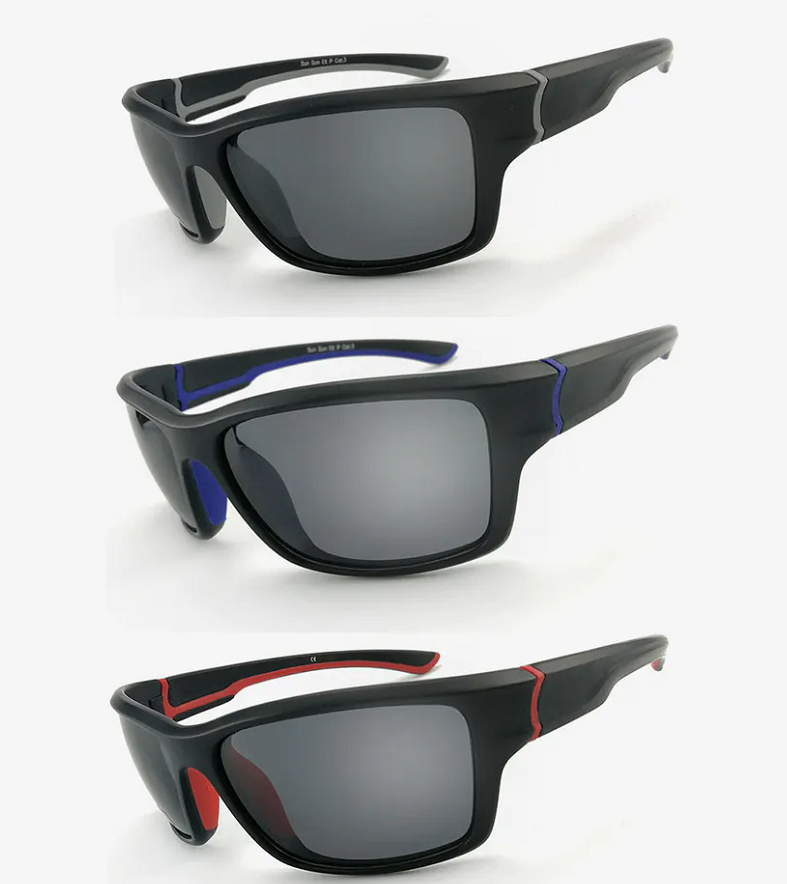

Sunglass can be divided into three categories according to the purpose: protective sunglass, light-colored sunglass and special-purpose sunglass.
The so-called sunshade mirror, as its name implies, is used for shading. People usually adjust the luminous flux by adjusting the pupil size under the sun. When the light intensity exceeds the eye's adjustment ability, it will cause harm to the eye.
So in outdoor activities, especially in summer, many people use sun mirrors to block the sun, in order to reduce the eye regulation caused by fatigue or strong light caused by the injury.
The blocking effect of light colored sunglasses to the sun is not as good as that of sunshade mirror, but its color is rich, suit to be used with all kinds of dress collocation, have very strong adornment effect.
Light color sunglass because its colour is rich, design is diversiform, got the favour of young gens, fashionable woman is to its more dote on.
Sunglass for special purposes has a strong function of blocking the sun. It is often used on beaches, skiing, mountain climbing, golf and other fields where the sun is strong. Its anti-ULTRAVIOLET properties and other indicators have higher requirements.
Different people, according to different preferences and different uses to choose sunglasses, but the most fundamental is to be able to guarantee the wearer's safety and vision is not damaged from the basic principles.
The basic functions of sunglasses should be to reduce the stimulation of strong light, avoid distortion of visual objects, prevent UV, recognize color without distortion, and accurately identify traffic signals.
If afore-mentioned function has blemish, light loses the action of sunglass, heavy can produce giddy, eye acid billow wait for conscious not to adapt to a symptom, still can produce reaction sometimes slow, distinguish color illusion and walk to see the symptom with unequal content and cause traffic accident to wait. So choosing sunglasses cannot pay attention to style only and ignore its inherent quality.
Sunglasses classified by lensThe types of sunglasses lens can be roughly divided the following types of sunglasses:
1. Anti-reflective protective lenses: These lenses are coated with a thin layer of magnesium fluoride to prevent bright light from reflecting off the surface, allowing you to see more clearly and without interference from the bright light. To check if your sunglasses really do have anti-reflective protection, aim your glasses at a light source. If you see a purple or green reflection, it means the lenses are coated with anti-reflective coatings.
2. Colored lenses: Also known as "dyed lenses", chemicals are added to make the lenses appear colored, which are used to absorb certain wavelengths of light. This is the most commonly used type of lens for sunglasses.
3. Colored lenses: These lenses produce the same effect as colored lenses, except that they are made in a different way by applying color to the surface of the lens. The most well-known is the "graded colored lenses", in which the color is the darkest at the top and then fades down.Sunglasses with degrees are usually colored.
4. Polarized lenses: In order to filter the glare from the sun in equal directions on water, land or snow, a special vertical coating is added to the lens. This is called a polarized lens.Ideal for outdoor sports (e.g., sea activities, skiing or fishing).
5.Discolored lenses: Also known as "photosensitive lenses". Because the chemical substance of silver halide is added to the lens, the transparent and colorless lens will turn into colored lens when exposed to strong light for protection, so it is suitable for indoor and outdoor use at the same time.
6. Sunglasses clip: Sunglasses clip is polarizing sunglasses specially designed for short-sighted people, effectively preventing glare and UV rays.Especially suitable for driving, outdoor, fishing and other outdoor sports. Using polarizing lens technology, the visual analysis power is greatly improved.Eliminate 99% of reflected and scattered light, making your field of vision clearer and smoother.The lens is specially enhanced with film treatment, effective degree of wear resistance, scratch resistance, impact resistance.
7. Night driving lens: The night driving lens should be able to block more than 80% of the strong light of the other car, and the light transmittance of the main lens must be GT;75%, observe the road is not affected, wear a good pair of driving night vision goggles at night, drivers can not only see the road surface, but also can effectively reduce the glare from the other side of the car headlights glare and other harmful light, while blocking the strong light can see the road surface, so as to ensure your driving safety.
Sunglasses species characteristics:
1) Gray lens can absorb evenly any color spectrum, so the scene will only become dark, but there will be no obvious color difference, showing the true natural feeling.A neutral color system.
2) Tawny-colored lenses: Filter out large amounts of blue light to improve visual contrast and clarity, which works well in heavy air pollution or foggy conditions.Generally can block the smooth bright surface of the reflected light, the wearer can still see fine parts, is an ideal choice for drivers.
3) Green lenses: at the same time to absorb light, to maximize the green light to reach the eye, so there is a cool and comfortable feeling, suitable for people whose eyes are easily tired.
4) Blue gray lens: similar to gray lens, same as neutral lens, but darker color, higher visible absorption rate.
5) mercury lens: lens surface with high density mirror coating. Such lenses absorb more reflected visible light, making them suitable for outdoor sports.
6)Yellow lenses: Strictly speaking, these are not solar lenses, as they do not reduce visible light, but at foggy and dusk, yellow lenses can improve contrast and provide more accurate vision, which is why they are also called night vision goggles.Some young people wear "sunglasses" with yellow lenses as decorations. For light blue, light pink and other lenses: also more decorative than practical lenses.
7)Black green lens: absorb the heat, bring a cool feeling, but the light transmittance and the definition is lower, suitable for sun wear, driving should not wear.
8)Blue lens: beach can wear the sun blue lens, blue can effectively filter the reflection of the sea and the sky blue.Blue lenses should be avoided when driving, as they can confuse the colours of traffic signals.
The followings are some tips for wholesale sunglasses purchase from China professional sunglasses manufacturer, Eugenia Eyewear:
1. The instinct of human have ego to protect, eyes meet with strong light, the pupil will naturally become smaller, cut into the eyes of uv energy, once without uv protection function on the glasses, which can make the pupil dilation, plus the role of the sunglasses not isolate uv, at this moment is equal to the portal open eyes, let the ultraviolet light to enter, damage to the eyes.
2. Sunglasses can block ultraviolet ray, because the lens added a special coating film, and inferior sunglasses not only cannot block ultraviolet ray, which still let lens transmittance drop seriously, make pupil dilate, ultraviolet ray can shoot in large quantities instead, make eye damage. In addition, inferior lens still makes a person appear disgusting, forgetful, insomnia wait for visual fatigue symptom.
3. The color of the sunglasses lens to light gray, tan or light smoke color is superior, followed by green, amber, blue, and so on, red is only used for sunbathing or snow.
4. Polarized sunglasses are best for cars because they reduce the glare.
5. If you wear sunglasses and others can see your eyes clearly, your lenses of sunglasses are too light in color.
6. When the sun goes down, it's best to remove your sunglasses. Otherwise, our eyesight will be affected in the weak light.
7. You should go to the regular eyeglasses shop to choose the sunglasses with the function of preventing ultraviolet ray that the regular manufacturer produces.
8. Pay attention to the sunglass lens surface when selecting.
9. When buying sunglasses, you can judge whether the object is clear or not.
To buy quality sunglasses, the only way to do it is to go to a professional optical shop, a regular eyewear shop to buy sunglasses.
10. Purchase sunglasses based on face shape:
a. round face: you need straight or angular frames to weaken your outline. Please choose dark, implicit color sunglasses lenses to reduce the sense of obesity and make your face look more exquisite.
b. square face: as opposed to round face, you need some rounded corners, streamlined picture frame to set off your unruly extraordinary temperament.
c. triangle face shape: please try to avoid using big picture frame, square frame, because this will appear wider on the face, use thin picture frame, round picture frame, bright color is the best.
d. oval face: you are naturally very suitable for Taiwan sunglasses. No matter what style is suitable for you, just pay attention to the size and proportion.
e. rectangular face: the most suitable for you is the large frame of sunglasses, so you can make up for the face long small shortcomings, let the face look more delicate, the color is mainly dark.
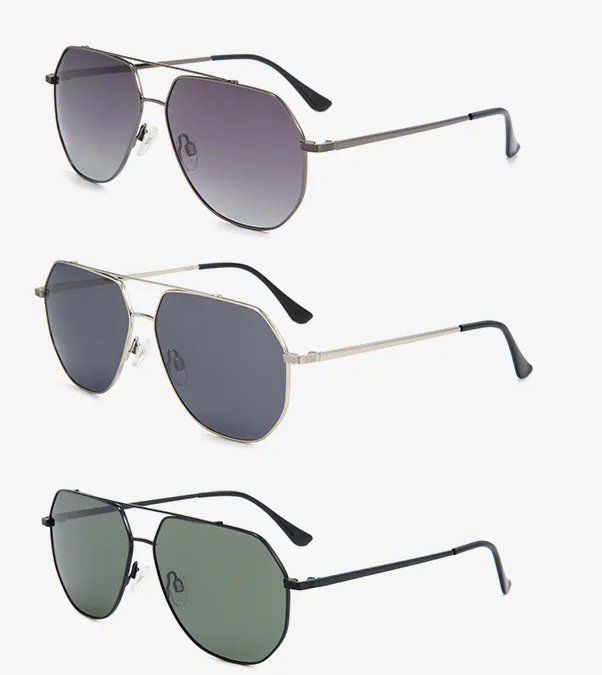
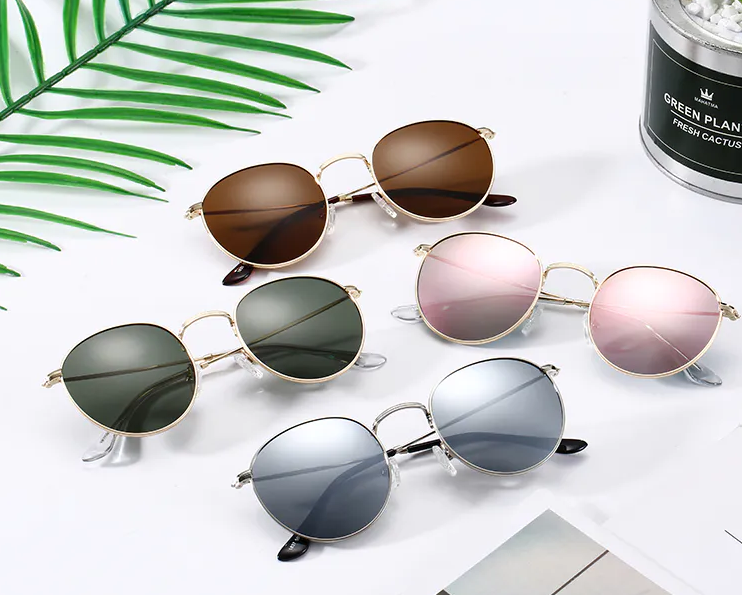
Many famous brands have sunglasses as part of their product lines. Many sunglass makers also tout the features and special textures of their products. Depending on the feature and brand, sunglasses can range in price from less than $20 to a few hundred dollars. In addition, there are counterfeits out there. Visit discount stores and flea markets and you'll find vendors selling knockoffs of overpriced sunglasses that look exactly the same but cost far less than the real thing.
When you buy real brand sunglasses instead of fake ones, are you spending a lot of money on just one brand, or is there a real fundamental difference? The biggest problem with cheap sunglasses is the way the lenses are made. They are simply coated with a coloured film of ordinary plastic.
Even though the colors and frames of these fakes resemble those of some famous brands, the actual lenses are quite different.
Quality sunglasses are very effective "light regulators". Sunglasses adjust foreign light to suit the human eye. In the next section, various techniques used by sunglass manufacturers to regulate light will be described. To better understand these technologies, you must first learn something about light.
A beam of light has certain electromagnetic energy. The size of a wave is measured in terms of its wavelength. Visible light has a wavelength range of 400 to 700 nanometers.
The energy of a light wave is inversely proportional to the wavelength. The shorter the wavelength, the higher the energy. In visible light, violet has the highest energy, red has the lowest, and above the visible spectrum is ultraviolet.
In fact, natural light contains a lot of ultraviolet light. Ultraviolet light can damage your cornea and retina due to its high energy.
The luminance or intensity of a light is measured in lumens. Indoors, for example, most artificial light has an intensity of 400 to 600 lumens. Outdoors in bright sunshine, the brightness fluctuates widely, ranging from 1,000 lumens in the shade to 6,000 lumens in places with large concrete floors, such as highways. Below 3,500 lumens, our eyes feel comfortable. When the brightness of direct or reflected light reaches 4,000 lumens, the human eye begins to struggle to receive light.
When we try to see these very bright areas, we only see a white flash, which is called glare. To reduce the discomfort caused by too much light entering our eyes, we begin to squint. Once the brightness reaches 10,000 lumens, your eye begins to filter out the light completely because of the intensity of the light it receives. Exposure to such strong light for too long can cause damage, leading to temporary or even permanent blindness.
On a clear day, a patch of snow can reflect as much as 12,000 lumens of light, which can cause snow blindness if we look directly at it without any protection.
Visible light is light that can be perceived by the human eye. The visible light we see from the sun appears colorless, known as white light. In fact, it is a mixture of colored light of various frequencies. All light that is a mixture of colors in the visible spectrum is colorless or white. For more information, see how light works.
There are two basic ways we can see colors.
One way is for an object itself to emit light of a certain frequency, such as in a neon light. Another way is for an object to absorb all other frequencies of light and reflect only a certain frequency, or to reflect multiple frequencies of light that mix to perceive one color, such as how an object painted with paint displays color. For example, one way to see yellow light is if the object emits light directly at a yellow frequency; Another way is to absorb the blue part of the spectrum and reflect the red and green parts of the spectrum, which are mixed and perceived as yellow by the human eye.
Here are three types of light that are important when it comes to sunglasses:
Direct light - Direct light is direct light from a source (such as the sun) into your eye.
Too much direct light blurs the details of your surroundings and makes it difficult to focus.
Reflected light - Reflected light is usually in the form of glare.
Reflected light is light that is reflected from a reflecting object back to the eye.
As with direct light, strong reflected light makes it difficult to perceive detail or look directly at an object.
Snow, water, glass, and white sand are all good reflectors.
Diffuse light - Diffuse light is light that bounces off in many directions, so that it does not appear to have a specific source.
A typical example of diffuse light is the glow over large cities.
It is very difficult to identify a single light source for it.
When there is no direct light source, we can still see things, and that is the result of diffuse light.
Good quality sunglasses can eliminate UV rays from the spectrum, reduce direct light, make people feel comfortable, and also eliminate or reduce reflected light (depending on the reflector).
An interesting property of light is polarization.
When reflected off certain surfaces, such as water, light becomes polarized.
Because of the polarized nature of the reflected light, polarized sunglasses eliminate light reflected from water or similar reflective surfaces.
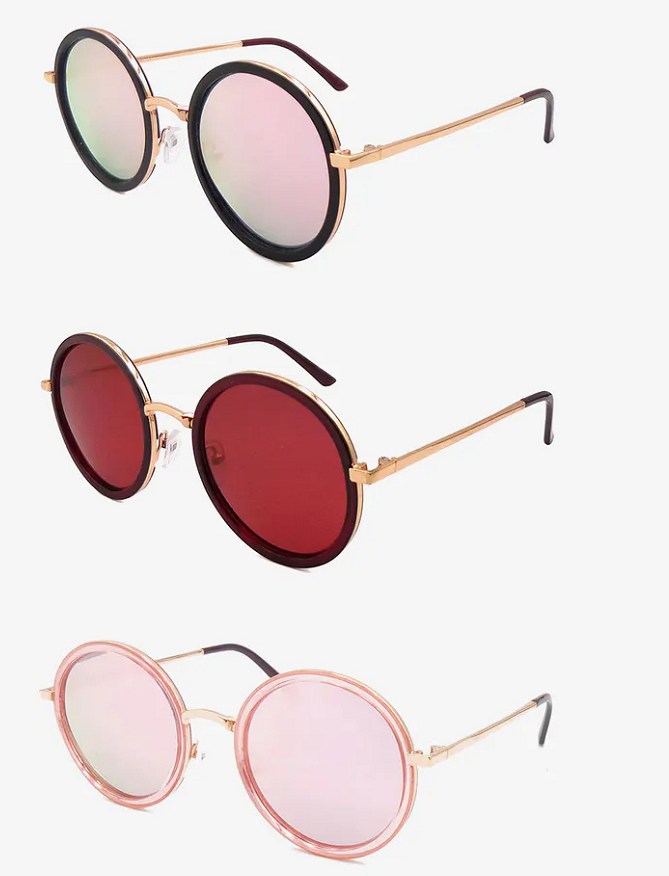
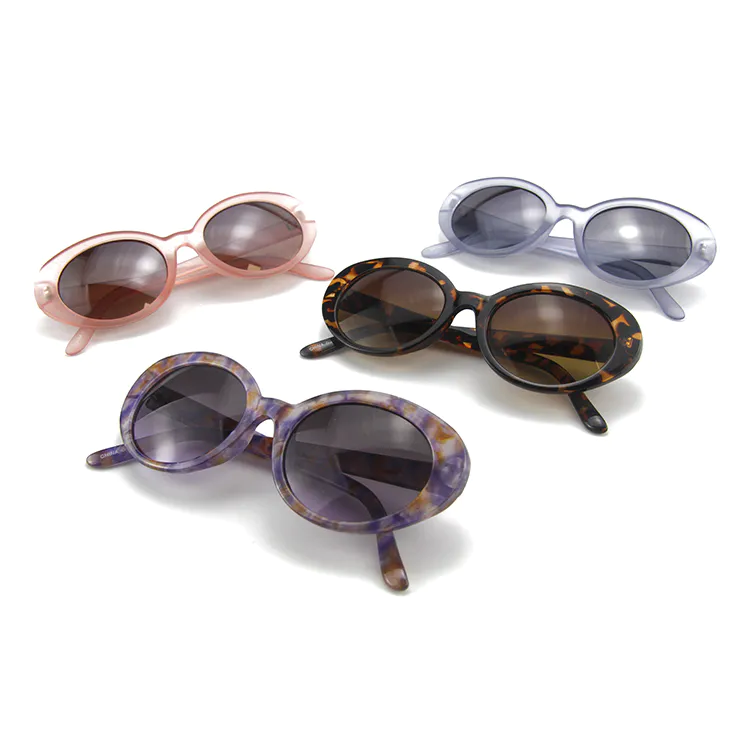
Tinted lens sunglasses:
The color of a sunglasses lens determines which part of the spectrum of light the lens can absorb.
Manufacturers use different colors to produce specific effects.
1. Gray is a good universal color that minimizes color distortion while reducing brightness.
Gray lenses provide glare protection, making them ideal for driving and general purposes.
2. Yellow or gold lenses reduce blue light while allowing more light of other frequencies to pass through the lens. Because blue light bounces back and disperses a lot of light, it produces a kind of glare known as blue haze. In fact, yellow cancels out the blue part of the spectrum, making everything bright and clear. That's why snow blind sunglasses are usually yellow. These colors distort color perception a bit, so sunglasses of these colors are not suitable for activities that require accurate color recognition.
3.Amber and brown are also good universal colors. They reduce the glare effect and, in addition to ultraviolet light, their unique molecules can absorb higher-frequency colors, such as blue.
Studies have shown that long-term exposure to near-ultraviolet light, such as blue and purple, is a risk factor for cataracts. These sunglasses cause the same color distortion as yellow lenses, but increase contrast and sharpness.
4. Green lenses can filter out some blue light and reduce the glare effect.Of all colors, green lenses are popular because they provide the highest contrast and sharpest vision.
5. On a green or blue background, purple and rose lenses provide the best contrast for objects.
So they're good for hunting and water skiing.
Many sunglass makers use a process called constant density to dye their lenses.
This is the most antiquated sunglasses manufacturing process, the whole glass or polycarbonate mixture material has the same color.
So in the process of making the lens, the color is inside the lens. A coating of light-absorbing molecules on the surface of pure polycarbonate is also used as a dye. The most common way to stain a polycarbonate lens is to soak the lens in a special liquid that contains the dye, so that it is slowly absorbed into the plastic. To make the color darker, simply extend the time the lens is immersed in the liquid.
Polarized sunglasses
Light waves from the sun or even artificial light sources such as bulbs vibrate and travel in all directions.
Light is said to be polarized when it vibrates in one or more plane directions, whether it is transmitted, reflected, diffused, or refracted.
Polarizing processes may occur naturally or be artificially stimulated.The glare you see every time you look at a lake is an example of natural polarization. The glare from the lake does not penetrate the water's "filter", which is why it is impossible to see what is below, even though the water is very clear.
Polarization filters are typically made by coating a transparent plastic or glass surface with a chemical film.
In general, the molecules in the compounds used are naturally arranged in parallel with each other.
When spread evenly over the lens, these molecules form tiny lenses that absorb all the light in the same direction as they are aligned.
Most of the glare that forces you to wear sunglasses comes from horizontal surfaces, such as water and highways. When light reaches a surface, the reflected light becomes polarized in the same direction as the surface. Thus, a highly reflective horizontal surface, such as a lake, can produce a large amount of horizontally polarized light. Thus, the polarized lenses of sunglasses are fixed at an Angle so that only vertically polarized light can penetrate the lenses. You can observe this by wearing polarized sunglasses and looking at a horizontal surface, such as the hood of a car. Slowly tilt your head to the left or right. You will notice that the glare from this surface becomes brighter as you adjust the Angle of your vision.
Before you buy, you can tell if it's true by doing a simple test. Find a reflective surface, then hold the sunglasses and look at the surface through a lens. Slowly rotate the sunglasses 90 degrees to see if the reflected glare decreases or increases. If the sunglasses are polarized, you will see a significant reduction in glare.
Sunglasses or prescription glasses that darken when their mirrors are exposed to sunlight are called discoloration glasses. The color-changing lenses rely on a special chemical reaction in ultraviolet light. Discoloration lenses contain millions of molecules of certain substances, such as silver chloride or silver halide. In the absence of ultraviolet light, visible light, a common component of artificial light, can penetrate these molecules. But when exposed to ultraviolet light from the sun, these molecules undergo a chemical process that changes their shape. The new molecular structure absorbs some of the visible light, darkening the lens. The number of molecules whose shape changes varies with uv intensity.
When you come inside and leave the ultraviolet light, a chemical reversal occurs. When suddenly exposed to ultraviolet light, these molecules quickly revert to their original structure, thus losing the ability to absorb light.
Whether the change is positive or negative, the whole process takes place very quickly. In the 1960s, manufacturers produced products in which the lenses were made of glass, with molecules evenly distributed throughout the lens.
Problems with this approach become apparent when used in prescription glasses, as the thickness of different parts of the prescription lens can vary, with slightly thicker areas appearing darker. But with the increasing popularity of plastic lenses, a new approach has been developed. By soaking the plastic lens in a chemical tank, the discolored molecules are absorbed into the plastic lens to a depth of about 150 microns.
The new method is significantly better than simple coating processes, in which the discoloration molecules are only five microns thick and do not provide enough molecules to darken the lenses.
Mirror reflection sunglasses
Reflective sunglasses have lenses that reflect light like mirrors.
The lenses are coated with a very thin reflective coating -- so sparse that it's called a semi-silvered surface." The term "semi-silvered" comes from the fact that the reflecting molecules on the lens are so sparse that they are about half the number that would make the lens an opaque mirror. At the molecular level, the reflecting molecules are evenly distributed across the surface of the lens, forming a uniform film that covers only half of the lens area. This half of the silvered surface reflects about half of the light that reaches it, allowing the other half to pass through directly.
Typically, mirror coatings are graded, with the paint's color depth changing gradually from top to bottom.
This strengthens the sunglasses' ability to resist light from above and allows more light to come in from below and horizontally.
This means sunglasses can block out the sun's rays while also allowing you to see the dashboard while you're driving. Sometimes, the paint is a double gradient, the top and bottom of the lens have the highest color depth, while the middle of the lens is clear. The key problem with reflective sunglasses is that the paint is easily scratched.
Apparently, sunglasses manufacturers have not been able to successfully coat reflective film surfaces with scratch resistant coatings. Thus, the scratch - proof layer is applied to the lens surface, and the reflective film is applied above the scratch - proof layer.
Anti-scratch protective sunglasses
Glass is naturally scratch - proof, but most plastics are not.
To solve this problem, manufacturers have developed a series of methods to coat the lenses with a transparent but strong film.This kind of film is composed of drill-like carbon film and polycrystalline diamond sintered body. By ionization, a very thin but very resistant film is formed on the surface of the lens.
Antireflective coated sunglasses
A common problem with sunglasses is post-glare, which is caused when light hits the back of the lens and bounces back into your eyes. The purpose of the anti-reflective coating is to reduce this reflection of light from the lens. Like scratch protection, an antireflective coating is a very strong, thin film on the lens.
The refractive index of the antireflective coating is between that of air and glass.
This makes the intensity of light reflected from the inner and outer surfaces of the film almost equal.
When the film is about a quarter of the wavelength of light, the light reflected from the outer and inner surfaces of the film will cancel each other out through canceling interference, minimizing the glare you see.
Antireflective coatings are also applied to the front surfaces of refractive contact lenses and some sunglasses to eliminate the "hot spots" caused by the strong light reflected in the lenses.
Uv coated sunglasses
One of the most serious eye diseases is caused by ultraviolet light. According to the frequency and wavelength, ultraviolet rays are divided into two types: UVA and UVB.
As A natural eye protection mechanism, the cornea absorbs all UVB rays and most UVA rays. However, some UV A does reach the lens of the eye. Prolonged exposure to UVA can lead to cataracts. Small amounts of UVA passing through the cornea to the retina can cause macular degeneration, the leading cause of blindness in people over 65.
Long-term exposure to strong UV rays can lead to cancer of the eye or actinic keratitis, a burning of the retina. This often happens outdoors on a clear day after a winter snowfall, when the snow reflects the sun's glare and is often called snow blindness.
Sunglasses have a good uv coating that eliminates UV radiation. You must make sure your sunglasses filter out both types of UV rays 100 percent.
The label on your sunglasses should say what level of UV protection they offer, and what you need is 100 percent protection.
Technical index of sunglasses
Top focal deviation
The nominal top focal point value of sunglasses should be 0.00D. The deviation of top focal point (with positive or negative top focal point) may occur if the lens is manufactured or the lens is not in conformity with the assembly of the frame. If it is beyond a certain range, the wearer may feel that the object is deformed, and if it is serious, it will affect the wearer's visual health.
Corresponding to the requirements of National Standard Table 1 of GB10810.1 "Eyeglass Lenses -- Part 1: Single-Light and Multi-focus Lenses", the allowable focal point difference of ball-mirror top is ± 0.12d;
The focal degree tolerance of the column mirror top was ± 0.09d.
Prism degree.
Sunglasses prism degree should be 0.00 Δ, if the lens is a prism degree, will produce see things coke, exceeds the scope of the standard allows may cause eyes see things can't unity, or produce the high and low not balance, intensifying the wearer's eye muscle and optic disorderly adjustment, serious still can cause nerve adjustment disorder or producing strabismus, etc.
According to the requirements of GB10810.1 table 4, the tolerance of 0.25 Δ prism degrees.
Light transmission ratio (V)
For light-colored sunglasses, the light transmission ratio should be GT;
40%;
For the sunshade mirror, its light transmittance range is 8%~40%.
The light transmittance is an important index to characterize the function of sunglasses.
According to this function, the current Chinese standard divides sunglasses into three categories: sunglass, light-colored sunglasses and sunglasses for special purposes, while the European and international standards divide them into five categories.
Different types of sunglasses serve different purposes.
If light-colored sunglasses are used for shading, wearers will not be able to obtain good shading effects. For example, wearers will still feel tired due to the stimulation of bright light after long time in outdoor activities with strong sunlight.
Light color sunglasses have adornment effect commonly, or be used in the indoor with not intense sunshine.
On the contrary, wearing a sunshade mirror indoors or in places where strong sunlight is not needed will cause discomfort and fatigue due to overdilation of pupils.
In the sunshade mirror, products with relatively small transmission are not suitable for cyclists or drivers to wear, because cyclists or drivers travel faster than pedestrians, the low transmission will affect their reaction ability.
Mean transmittance
In terms of magnitude, the average transmission ratio is the average transmission ratio of the lens to ultraviolet rays in the uv spectrum interval. The standards are as follows:
A) In UVA band of 315nm~380nm, the average transmission ratio SUVA should ≤ V;
B) In the UVB band of 290nm~315nm, the average transmission ratio SUVB should be ≤0.5 V.
In addition, in the UVB band, the average transmission ratio of light-colored sunglasses should be ≤30%, and that of sunshade mirrors ≤5%.
When sunglasses to meet this requirement, to reach the minimum requirements for protection, namely the blocking light also blocked out the corresponding amount of ultraviolet light, wear the sunglasses at least do not increase the accept the amount of uv light (wear sunglasses, will reduce the luminous flux into the human eyes, which increases the wearer pupil, under the same external conditions, if sunglasses can't stop the corresponding amount of ultraviolet light, the eye will accept more than when not wearing sunglasses uv light).
In November 2006, GB10810.3, glasses Lenses and Related Products -- Part 3: Specification and Measurement Methods for Transmittance, was officially implemented, which clearly stipulated that the maximum UV transmittance of sunglasses lenses should not exceed 5%.
Sunglasses with uv protection are generally expressed in the following ways:
A) Labeled "UV400": This indicates that the lens' cutoff wavelength of UV is 400nm, i.e. the maximum wavelength () of the spectrum transmission ratio below 400nm is not more than 2%;
B) labeled "UV" and "anti-uv ": this indicates that the cutoff wavelength of the lens to UV is 380nm, i.e. the maximum wavelength () of the spectral transmission ratio under 380nm is not more than 2%;
C) Label "100%UV absorption ": this means that the lens has a 100%UV absorption function, that is, its average transmission ratio in the UV range is not greater than 0.5%.
The sunglass that achieves afore-mentioned requirement, just be the sunglass that has protective function to ultraviolet ray on real sense.
Anti-ultraviolet performance is an important index of sunglasses, whether a pair of sunglasses has anti-ultraviolet function, we can not tell with naked eyes.
China's current product standards have only a basic requirement for uv protection, that is, harmless to the wearer.
The protection function is mainly made by the manufacturer, but not all sunglasses have uv protection function. As consumers want to identify whether the product has UV protection function, they can only take the manufacturer's express commitment to the product as the only reference.
Color limit
To simulate the observation of yellow and green traffic signals through the lens and the observation of average daylight through the lens, the standard stipulates that the corresponding color coordinates should be located in the corresponding area in the chromaticity diagram (Figure 1).
If the measured color coordinate value exceeds the specified color limit area, it will lead to the confusion of various traffic signals, which is one of the hidden dangers of traffic accidents.
Transmission ratio of traffic signal
When red, yellow and green traffic signals are observed through lenses, the corresponding transmission ratio for traffic signals is stipulated in the standard: ≥8% for red signals;
Should be ≥6% to yellow and green signals;
If the transmission ratio of all kinds of traffic signals is too low, it will reduce the recognition ability of the signal, which is also one of the hidden dangers of traffic accidents.
Sunglasses logo
For the requirements of sunglasses logo, each pair of glasses should be marked with the standard code for implementation (QB2457, etc.), category (sunshade glasses or light-colored sunglasses, etc.) and the name and trademark of the manufacturer.
Category indication, for consumers in the choice of sunglasses can be based on the use and place of the correct purchase.
Impact resistance of sunglasses
For lenses indicated to be protective or ANSI(National standard), they must be able to withstand the free-fall impact of 16g steel balls from a height of 1.27m without breaking.
This index is the minimum requirement for glasses with protective functions.
If the protective function of the lens is indicated, but fails to pass this standard, the consumer may be misled to wear a pair of glasses which he considers to be safe in an unsafe situation. In case of an accident, it will directly harm the consumer's eyes.
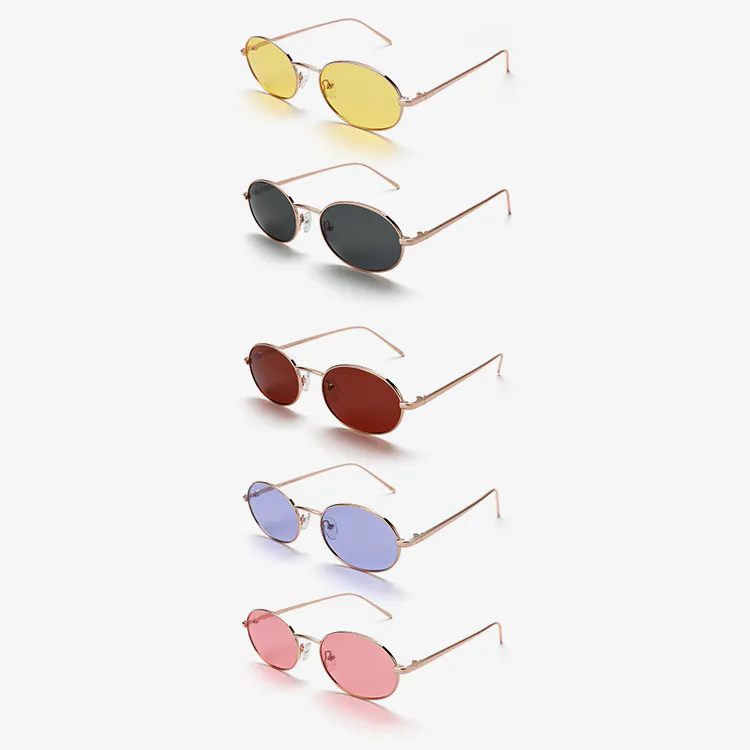
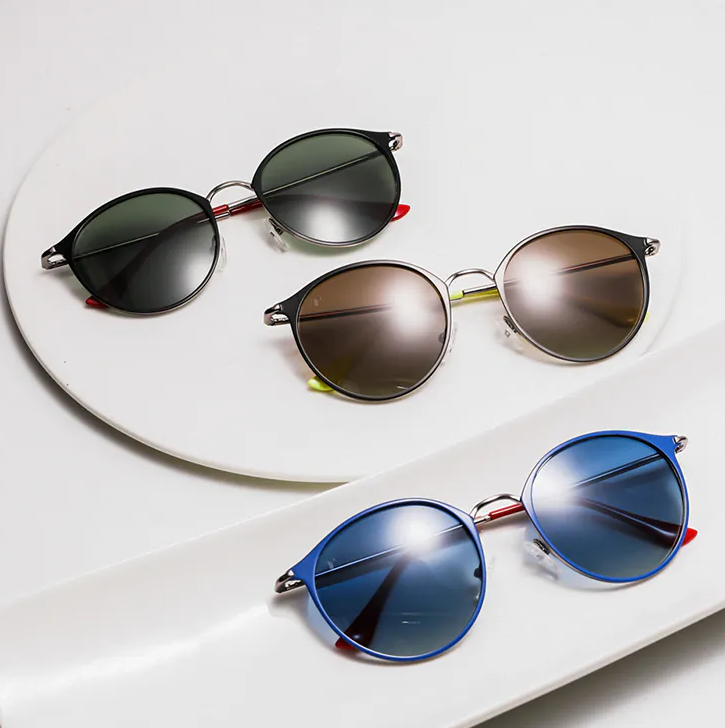
Advantages of sunglasses
1. Beautiful decoration
2. Cover eye defects
3. It can reduce the regulatory burden of the ciliary muscle of the eyes under strong light
4. Block out harmful light
5. Protect your eyes from harm
6. Wearing sunglasses will make your face look thin. The theory, put forward by Olsen's sister, is simple: Women who love beauty and thinness "go out of their way" to look smaller and thinner, and the bigger the sunglasses on their nose, the smaller their face, creating the "thin face" effect.
Disadvantages of sunglasses
1. The sunglasses lens of poor quality is easy to cause damage to the eyes. It cannot be anti-radiation, anti-UV and non-polarized light, but it cannot help people. Thereforem it's a neccesity of professional sunglasses manufacturer.
2. If you wear sunglasses long, it will leave a scar under the bridge of the nose.
3. Add weight to your ears.
Sunglasses are not appropriate to wear easy to suffer from eye diseases, cloudy days, indoor and other light dark circumstances without the need to wear sunglasses.
Some people do not have an occasion, no matter sunshine is strong and weak, even in dusk, dusk and also wearing sunglasses when seeing a movie, TV, this can add the burden of eye regulation necessarily, cause eye muscle tension and fatigue, make eyesight drops, see the thing is fuzzy, serious meeting appears giddy wait for a symptom.
For the visual system development is not perfect infant, children should not wear sunglasses.
In addition to glass sunglasses, other sunglasses lens material wear resistance is not high, users should always pay attention to the surface condition of sunglasses, when wear affects the clarity, should be replaced in time.
Dazzling sunglasses let you active in the sun, so free. In fact, sunglasses can block the sun, can not block pollution damage, so we need to care carefully, so as not to lose face. The way to care for your sunglasses is just like the way to care for your glasses. Wash, fold, and store them in a habit.
However, sunglasses are often taken off and worn, and they will be scratched if you are not careful. Therefore, I would like to remind you of some small details: when there is a stain on the sunglasses, please do not dig with your fingernails, because it is easy to scratch the surface.
When sunglasses are not worn, many people hang them from their heads, collars or pockets without moving their bodies too far to break or damage them.
Or some people will put them in the handbag. It is suggested that you should put them in the hard glasses box first and then put them in the handbag, so as to avoid being worn by the key, comb, copper plate and other small things, or stained with cosmetics such as lipstick. Do not collide with sharp objects.
Sunglasses worn by motorists are often put on the dashboard or seat without wearing them, which is a very bad habit. Hot weather will bake them out of shape, especially the plastic frames. It is better to take them off the bus or put them away in the glasses box.
Sunglasses protection:
No matter where you store your sunglasses, make sure the mirror faces up.
1: folding sunglasses. In the design of the frame, the left mirror leg is usually folded first and then the right.
2: Pick and wear your sunglasses. When operating, use both hands to operate, hold the mirror leg along the parallel direction of the cheek pick and wear.
3: About cleaning sunglasses. Wipe it with a special eyewear cloth. Dry rubbing is not recommended, however, as it is easy to grind the lenses. It is best to rinse with water, and then use a paper towel to blot up the moisture before wiping with eyewear cloth. Hold your hand while you wipe and then wipe the side of the mirror. Do e it gently, or it will damage the lenses and frames.
4. Make regular adjustments.Over time, the frames can become distorted, putting a strain on the nose and ears, and the lenses can easily come loose.You can fix it yourself or go to the store to make adjustments.
5: About placement.Be sure to place the convex surface of the lens upward for a short time, otherwise it is easy to grind, and avoid contact with various chemicals, cosmetics, drugs and so on. Avoid direct sunlight and high temperatures. If it is kept for a long time, wrap it with a cloth and put it in the case.Hope you pay attention to the daily maintenance of sunglasses, so as to better care sunglasses, extend the life of sunglasses. Sunglasses are a kind of eyesight health care products and beauty products or special accessories that reflect personal style to prevent the strong stimulation of sunlight to human eyes.
People will choose and buy sunglasses according to different needs. However, when buying sunglasses, some people often feel uncomfortable after the purchase, or encounter quality problems with the glasses. Experts remind the public to pay attention to the following points when buying sunglasses:
1. First, check the lens quality to see whether the surface of the lens is smooth and whether there are warps, abrasions and bubbles.Lens warping can cause line of sight deviation, uneven or marked, bubbles, dizziness and other discomfort.Also note that the lenses should not be too thin, otherwise high temperature deformation will also cause dizziness
2. Bring the sunglasses 45 cm away from your eyes and observe the vertical line and horizontal line around the glasses, such as window frame or door frame, then move the glasses up, down and back.If the straight line distorts or swings, the lens is out of shape and should not be purchased.
3. Another important indicator of light transmission ratio of sunglasses is the ratio of the light flux through the lens to the incident light flux, which is also an important performance index stipulated by a mandatory standard.If you use light colored sunglasses for shading, the wearer will not get the shading effect.Use sunshade mirror as light sunglasses to affect the wearer's visual clarity.
4. Put the sunglasses in front of you, observe the distant target through the lens, such as window frame or door frame, and then move the glasses up and down and back. The target should not swing or wavy deformation. Also you can observe the lamp tube image of lens surface of sunglasses lens under fluorescent lamp, rotate sunglasses to make the lamp tube image appears in the different place of lens, the lamp tube image is not deformed to be optimal. For polarized sunglasses on the market, some products use resin polarized lenses with a thickness of 0.7mm. Due to the thin lens, deformation is easy to occur in the assembly, so special attention should be paid to the purchase.
5. The color of the lens should not be biased, and the color of the surrounding environment should not be distorted.Before wearing sunglasses, first look at red, green, yellow and other colors of the object, then wear sunglasses, look at the same object, the color of the two observations should not be color bias, otherwise it will reduce the ability to recognize traffic lights.Color lenses, especially brightly colored sunglasses, should be recognized.
People that summer wear become more, some changed myopic glasses also change change color lens, wear on the eye from day to night.
More a few young people to pursue fashionable, regard sunglass as a kind of adornment, do not have an occasion, the eye does not leave lens, as time passes, can make eyesight drops, see the thing is fuzzy, serious meeting produces have a headache, giddy, dazzling and cannot long see wait for a symptom.
Medical experts call these symptoms "sunglasses syndrome".
This condition was embodied in a variety of feelings, such as early in the eyes close to nose around the site had numbness and tingling, breathing more obvious symptoms, like a cold, and people feel like there's little bugs crawling on the face, upper gum numbness, upper incisors feeling unwell, local blood circulation cause skin inflammation, acid bilges, the eye vision loss.
Physiological anatomy shows that there is a small hole below the eye, called the inferior orbital foramen, which contains an important nerve branch, namely the inferior orbital nerve of the trigeminal nerve.
It is distributed in the skin and nose between the fissure and the fissure and is responsible for sensory function.
Due to the weight of sunglasses and the focal point of the lens circle pressing on the infraorbital nerve, discomfort in the nerve distribution area will be caused, which usually occurs 2-3 weeks after wearing sunglasses.
Prevent sunglass syndrome, it is to want correct choice and reasonable use sunglass.
Avoid large-frame glasses. Because this kind of frame is mostly imported and designed according to the face shape of foreigners, and the distance between the pupils of Chinese adults is mostly smaller than the distance between the optical center of imported large-frame glasses, wearing this kind of glasses will greatly increase the burden of the eye regulation function and impair the vision.
As for the cheap sunglasses sold on the street stall, the production is very rough, the lens thickness is different, the color is not uniform, the optical performance is very poor, after wearing easy to cause headache, eye pain, fatigue and other discomfort, often wear this kind of poor quality sunglasses, extremely easy to cause vision decline.
Secondly, try not to wear large sunglasses as much as possible.
When it is necessary to wear the lens, shorten the time of wearing the lens. After removing the lens, massage along the eye frame and both sides of the nose with the palm for 10-20 times. Once comprehensive symptoms of sunglasses appear, stop wearing them.
In addition, short-sighted people who want to wear sunglasses can use the eyeholder tool to wear both sunglasses and short-sighted lenses or color-changing lenses.
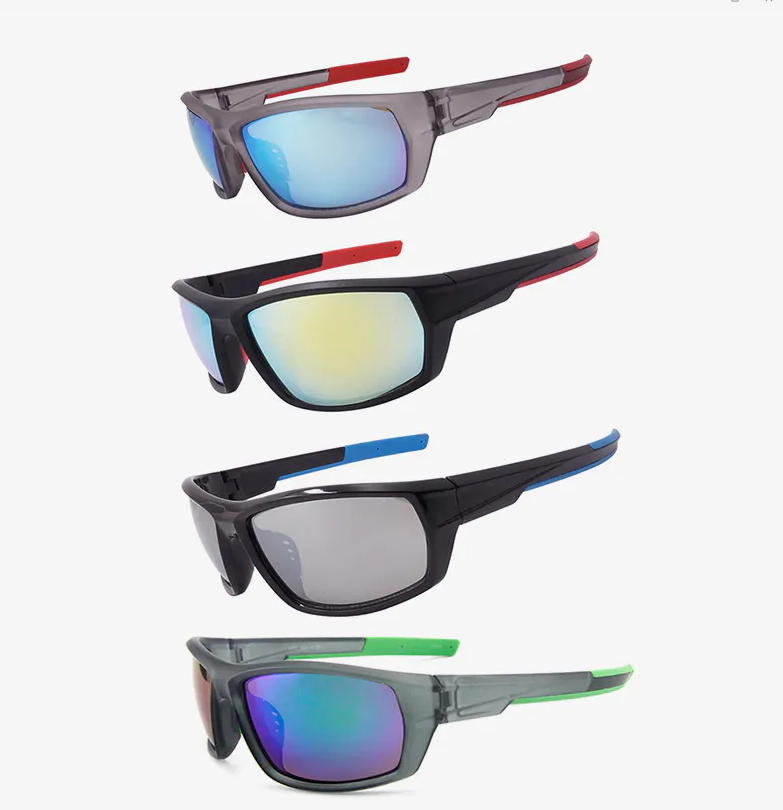
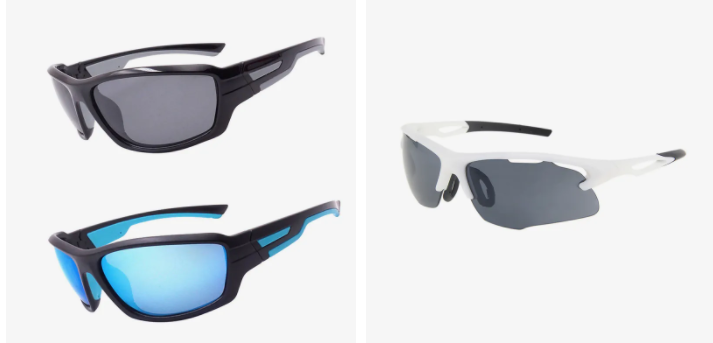
Summer is the world of sunglass, fashionable, beautiful, prevent radiate, these functions make people like to wear sunglass more, but concerned expert points out, should be careful when choosing sunglass, cannot pay attention to style only, ignore however sunglass itself quality problem.
Here are four substandard sunglasses you should never wear:
1. Sunglasses with a misnomer function of uv protection.
Good sunglasses can block more than 99% of the UV rays, and the identification of UV400 lenses are 100%(99.99%) uv blocking.
Wear sunglasses with poor uv protection function, the eye is like seeing things in a dark room, the pupil will become larger at this time, the residual ULTRAVIOLET ray will shoot into the eye in large quantities instead, making the eye hurt. It's best to go to a specialty store or shop at a well-known online store or flagship store. Must not buy on small ground stall, although those sunglass also can block ultraviolet ray, but lens is made for the making of STH. Is not in place, namely unqualified, cannot buy it because of cheapness, inferior glasses can cause the injury of different degree to the eye.
2. Sunglasses with substandard transmission ratio.
When worn, these sunglasses create a traffic signal recognition barrier that can lead to accidents.
All sunglasses, including professional driving glasses, sports glasses, fishing glasses...
.
(except myopic lens and presbyopia lens) the simple identification method is, can put the sunglasses in front of the eyes, observe the distant target through the lens, such as window frame or door frame, and then move the glasses up and down and back, the target in the lens field of vision should not swing and wavy deformation.
3. Sunglasses without category identification.
Sunglasses are generally divided into three categories, namely, sunshade mirrors for shading, light-colored mirrors for decoration, and special mirrors for anti-snow blindness or waterproof plane radiation.
If there is no product category identification, consumers cannot correctly identify the purpose of sunglasses when they buy them, which will affect the use effect.
4. The resistance performance does not meet the requirements of sunglasses.
The lens is easy to break when it is impacted by external force, and the fragment will cause fatal injury to people's eyes.
Frame material is very important also, have plate commonly, aluminous magnesium alloy, pure titanium.
Different demand for the sun requirements are not the same, there are special use for sports polarized mirror, polarized driving mirror, polarized fishing mirror, etc., when buying, you can ask clearly the professional use of sunglasses.
Experts remind consumers to buy sunglasses should be a regular shop to buy well-known brands;
When buying, try it on first, and compare whether the color difference between before and after wearing is obvious, it is advisable to see the object color without distortion after wearing sunglasses.
What reason is wearing solar lens to be able to faint?
If you feel dizzy when wearing sunglasses, it may be due to the pressure caused by the tight footplate of the mirror, the discomfort of the nose rest, or the imbalance of parameters such as sphericity and prismatic degree of the lens itself.
About the multicolored phenomenon of lens, have nothing to do with giddy in principle, but the visual effect that may cause is bad. The reason for the colorfulness may be a problem with the lens injection process or the solution.
Normally, our glasses are from China's high-end glasses professional manufacturers, and a long history of Taiwan manufacturers. It is good to control in this respect, but sometimes bad things can't be avoided.
After all, it's all manual work.
The sunglass of 8 curved above how much also is to have degree, also cause dizziness possibly.
Supplement: the Angle of nasal support can be adjusted mostly, dizziness is also likely to be unqualified sunglasses, should stop wearing.
Night driving sunglasses
Traffic accidents at night are 1.5 times more likely than during the day, and 60% of major traffic deaths occur at night.
When driving at night, high beams and flashing surveillance cameras on highways can cause intense stimulation and even damage to human eyes.
When the human eye is stimulated by the strong light of the car lamp, the pupil constricts automatically from the normal 5~8 mm or so to 1 mm or even smaller, reducing the amount of light to the original 1/16 above, after meeting the car because the pupil is too late to reply, the amount of light is sharply reduced, similar to the phenomenon of night blindness, numerous traffic accidents will occur from this.
Human eyes have very little tolerance to strong light irradiation, and the intensity of strong light irradiation is often tens of times that of human eyes.
Because of the eye's aggregation of light, a strong beam of light penetrates the eye and reaches the retina hundreds or even thousands of times stronger than it does the cornea.
Night driving safety solutions
1. Ordinary sunglasses or chameleons: only suitable for wearing during the day, driving at night will seriously affect the vision (National standards require the light transmittance of driving glasses at night must be & GT;
75%), the light transmittance of ordinary sunglasses is not up to the requirement.
2. Ordinary light yellow night goggles and gradient all-weather goggles: ordinary light yellow night vision goggles can only block 20-30% of the strong light;
All-weather driving glasses can reduce the strong light, but the dimming of vision will affect the road safety, which also does not meet the national standard for night driving glasses.
Article 3 light barrier, reduce light and night vision treasure: placed in glass objects on the reduction of light vehicles will block the driver in front of the part of the vision, to form view of blind area, moreover, this kind of mask with car body in front of the driver of the turbulence and, over time, make the person produces adverse reactions of headache dizziness and nausea, and some products fragile unsafe.
A good pair of driving glasses at night should be able to block more than 80% of the strong light of the other side of the car, and the transmittance of the main lens must be gt;
75%. Observe that the road is not affected. Wearing a good pair of driving night vision goggles at night can ensure the driver's driving safety.
Sunglasses are in fashion
Sunglasses were also not used to block out the sun when they first appeared.
In 1752, JamesAyscough made the first glasses with green or blue tinted lenses.
Although he is revered as the ancestor of sunglasses, at the time he only thought that such designs could improve people's visual problems.
According to the 12th century book "Guiqian Zhi" by Liu Qi, Chinese officials also wore sunglasses made of smoky crystals, not to block the glare of the sun, but to hide their reactions when listening to confessions.
In this way, the function of sunglasses at the beginning of invention is quite different from that of shading and fashion.
With the rise of the second scientific and technological revolution, the functions of sunshade and eye protection of sunglasses are more and more obvious.
The mass production of cars and the use of airplanes brought sunglasses to the masses.
At that time, almost all of the aircraft were open-top type, in order to shade the strong wind and sand and dazzling sunlight, sunglasses in the design pay more attention to the function of shading and eye protection, gradually become one of the necessary items for pilots.
Initially, the newly invented sunglasses were just pilots' eyeglasses.
When it was discovered that it not only absorbed sunlight, but also emitted little heat and had a protective effect on vision, it gradually spread to the US military.
As a result, their good looks, crisp uniforms and handsome windshield sunglasses make American soldiers the prince charming of many teenage girls.
During World War II, The us five-star General General MacArthur wore sunglasses to battle. The image of him smoking a pipe and wearing sunglasses was deeply rooted in people's hearts. The love for heroes also reached the general's sunglasses.

